Dynamic Modeling and Simulation Analysis of Inter-Shaft Bearings with Local Defects Considering Elasto-Hydrodynamic Lubrication
Abstract
:1. Introduction
2. Establishment of Fault Dynamic Model
2.1. Subsection Simplification and Assumption of Inter-Shaft Bearings
2.2. Nonlinear Hertz Contact Forces
2.3. Time-Varying Displacement Excitation
2.3.1. The TVDE of Defects in the OR
2.3.2. The TVDE with Defects in the IR
2.3.3. TVDE of Rolling Element Fault
2.4. Dynamic Model for Inter-Shaft Bearings with Local Defects
2.5. Fault Dynamic Model Considering the Influence of EHL
3. Experimental Validation of the Numerical Model
3.1. Experimental System
3.2. Bearing Parameters
3.3. Verification and Analysis of Dynamic Model of Inter-Shaft Bearing Fault
Verification of the Simulation Results of the Dynamic Model
- (1)
- Normal State of Inter-Shaft Bearing
- (2)
- Simulation of the Inter-Shaft Bearing with OR Fault
- (3)
- Simulation of the Inter-Shaft Bearing with the IR Fault
- (4)
- Simulation of the Inter-Shaft Bearing with Roller Fault
4. Dynamic Response Analysis of the Inter-Shaft Bearing with Local Defects
4.1. Characteristics of Micro-Local Defects in Inter-Shaft Bearings
4.2. Simulation Analysis of Fault Characteristic Parameters (CP)
4.2.1. Effect of Defect Widths on CP
4.2.2. Effect of External Loads on CP
4.2.3. Effect of Rotating Speeds on CP
5. Conclusions
- (1)
- The fault dynamic model established in this paper can simulate the impact characteristics and distribution law of the inter-shaft bearing fault signals accurately, and the fault frequency calculation error is less than 1%.
- (2)
- With the increase of defect size, the vibration amplitude of the inter-shaft bearing also increases. When the width of the defect is less than 0.1 mm, the FCF and a large amount of interference frequently occurs in the envelope spectrum. This can interfere with the early micro-fault diagnosis of the inter-shaft bearing and reduce the effect of the fault diagnosis method based on time–frequency analysis.
- (3)
- The magnitude of the signal peak can reflect the impact force caused by the bearing fault. Normally, the MV increases with the increase in fault impact force since the change of MV is very sensitive to the fault in the early stage of fault; it is also very effective in monitoring the pitting corrosion fault on the bearing surface. AMV, AST and EV can reflect the magnitudes of signal energy. With the development of faults, the overall trend is relatively stable.
- (4)
- The KF and IF indicate whether there is impact component in signals, which is very sensitive to early bearing faults. The PF is sensitive to the change in rotating speed and defect width. The SF is the ratio of the EV to AMV. It has a certain indication effect on the fault, but it is not sensitive to fault change. Therefore, SF is not suitable as the CP for fault diagnosis.
Author Contributions
Funding
Institutional Review Board Statement
Informed Consent Statement
Data Availability Statement
Conflicts of Interest
References
- Lin, S.; Sun, J.; Zhao, C.; Peng, Y. Research on dynamic characteristics of the RBBH system based on dynamics model and vibration data fusion. Sensors 2022, 22, 3806. [Google Scholar] [CrossRef] [PubMed]
- Gupta, P.K. Dynamics of rolling-element bearings-part I: Cylindrical roller bearing analysis. J. Tribol. 1979, 101, 293–304. [Google Scholar] [CrossRef]
- Gupta, P.K. Dynamics of rolling-element bearings-part II: Cylindrical roller bearing results. J. Lubr. Technol. 1979, 101, 305–311. [Google Scholar] [CrossRef]
- Gupta, P.K. Dynamics of rolling-element bearings part III: Ball bearing analysis. J. Lubr. Technol. 1979, 101, 312–318. [Google Scholar] [CrossRef]
- Gupta, P.K. Advanced Dynamics of Rolling Elements, 1st ed.; Springer: New York, NY, USA, 1984. [Google Scholar]
- Gupta, P.K.; Dill, J.F.; Bandow, H.E. Dynamics of rolling element bearings experimental validation of the DREB and RAPIDREB computer programs. J. Tribol. 1985, 107, 132–137. [Google Scholar] [CrossRef]
- Gupta, P.K. On the geometrical imperfections in cylindrical roller bearings. J. Tribol. 1988, 110, 13–18. [Google Scholar] [CrossRef]
- Gupta, P.K. On the dynamics of a tapered roller bearing. J. Tribol. 1989, 111, 278–287. [Google Scholar] [CrossRef]
- Gupta, P.K. Analytical modeling of rolling bearings. Encycl. Tribol. 2013, 72–80. [Google Scholar] [CrossRef]
- Mcfadden, P.D.; Smith, J.D. Model for the vibration produced by a single point defect in a rolling element bearing. J. Sound Vib. 1984, 96, 69–82. [Google Scholar] [CrossRef]
- Su, Y.T.; Lin, S.J. On initial fault detection of a tapered roller bearing: Frequency domain analysis. J. Sound Vib. 1992, 155, 75–84. [Google Scholar] [CrossRef]
- Su, Y.T.; Lin, M.H.; Lee, M.S. The effects of surface irregularities on roller bearing vibrations. J. Sound Vib. 1993, 165, 455–466. [Google Scholar] [CrossRef]
- Hu, Q.; Deng, S.; Teng, H. A 5-DOF model for aeroengine spindle dual-rotor system analysis. Chin. J. Aeronaut. 2011, 24, 224–234. [Google Scholar] [CrossRef] [Green Version]
- Patel, V.N.; Tandon, N.; Pandey, R.K. Vibration studies of dynamically loaded deep groove ball bearings in presence of local defects on races. Procedia Eng. 2013, 64, 1582–1591. [Google Scholar] [CrossRef]
- Xi, S.T.; Cao, H.R.; Chen, X.F.; Niu, L.K. Dynamic modeling of machine tool spindle bearing system and model based diagnosis of bearing fault caused by collision. Procedia CIRP 2018, 77, 614–617. [Google Scholar] [CrossRef]
- Ma, S.; Li, W.; Yan, K.; Li, Y.; Zhu, Y.; Hong, J. A study on the dynamic contact feature of four-contact-point ball bearing. Mech. Syst. Signal Process. 2022, 174, 109111. [Google Scholar] [CrossRef]
- Patel, U.A.; Upadhyay, S.H. Nonlinear dynamic response of cylindrical roller bearing-rotor system with 9 degree of freedom model having a combined localized defect at inner-outer races of bearing. Tribol. Trans. 2016, 60, 284–299. [Google Scholar] [CrossRef]
- Liu, J.; Xue, L.; Xu, Z.; Wu, H.; Guang, P. Vibration characteristics of a high-speed flexible angular contact ball bearing with the manufacturing error. Mech. Mach. Theory 2021, 162, 104335. [Google Scholar] [CrossRef]
- Cao, H.; Niu, L.; He, Z. Method for vibration response simulation and sensor placement optimization of a machine tool spindle system with a bearing defect. Sensors 2012, 12, 8732–8754. [Google Scholar] [CrossRef] [Green Version]
- Patil, M.S.; Mathew, J.; Rajendrakumar, P.K.; Desai, S. A Theoretical model to predict the effect of localized defect on vibrations associated with ball bearing. Int. J. Mech. Sci. 2010, 52, 1193–1201. [Google Scholar] [CrossRef]
- Kulkarni, P.G.; Sahasrabudhe, A.D. A dynamic model of ball bearing for simulating localized defects on outer race using cubic hermite spline. J. Mech. Sci. Technol. 2014, 28, 3433–3442. [Google Scholar] [CrossRef]
- Cui, L.L.; Zhang, Y.; Zhang, F.B.; Lee, S.C. Vibration response mechanism of faulty outer race rolling element bearings for quantitative analysis. J. Sound Vib. 2016, 364, 67–76. [Google Scholar] [CrossRef]
- Khanam, S.; Tandon, N.; Dutt, J.K. Multi-event excitation force model for inner race defect in a rolling element bearing. J. Tribol. 2016, 138, 011106. [Google Scholar] [CrossRef]
- Wang, F.T.; Jing, M.Q.; Yi, J.; Dong, G.H. Dynamic modelling for vibration analysis of a cylindrical roller bearing due to localized defects on raceways. Proc. Inst. Mech. Eng. Part K J. Multi-Body Dyn. 2015, 22939–22964. [Google Scholar] [CrossRef] [Green Version]
- Sassi, S.; Badri, B.; Thomas, M. A numerical model to predict damaged bearing vibrations. J. Vib. Control. 2007, 13, 1603–1628. [Google Scholar] [CrossRef]
- Wang, C.; Wu, J.; Cheng, J.; Zhang, S.; Zhang, K. Elasto-hydrodynamic lubrication of the journal bearing system with a relief groove in the scroll compressor: Simulation and experiment. Tribol. Int. 2022, 165, 107252. [Google Scholar] [CrossRef]
- Yan, C.F.; Yuan, H.; Wang, X.; Wu, L.X. Dynamics modeling on local defect of deep groove ball bearing under point contact elasto-hydrodynamic lubrication condition. J. Vib. Shock 2016, 35, 61–70. [Google Scholar]
- Zhang, Y.Y.; Wang, X.L.; Yan, X.L. Dynamic behaviors of the elasto-hydrodynamic lubricated contact for rolling bearings. J. Tribol. 2012, 135, 021501. [Google Scholar] [CrossRef]
- Choudhury, A.; Tandon, N. Vibration response of rolling element bearings in a rotor bearing system to a local defect under radial load. J. Tribol. 2006, 128, 252–261. [Google Scholar] [CrossRef]
- Jiang, Y.C.; Huang, W.T.; Luo, J.N.; Wang, W.J. An improved dynamic model of defective bearings considering the three-dimensional geometric relationship between the rolling element and defect area. Mech. Syst. Signal Process. 2019, 129, 694–716. [Google Scholar] [CrossRef]
- Bourdon, A.; Chesné, S.; André, H.; Rémond, D. Reconstruction of angular speed variations in the angular domain to diagnose and quantify taper roller bearing outer race fault. Mech. Syst. Signal Process. 2019, 120, 1–15. [Google Scholar] [CrossRef]
- Li, Y.M.; Cao, H.R.; Tang, K. A general dynamic model coupled with EFEM and DBM of rolling bearing-rotor system. Mech. Syst. Signal Process. 2019, 134, 106322. [Google Scholar] [CrossRef]
- Niu, L.K.; Cao, H.R.; Hou, H.P.; Wu, B.; Lan, Y.; Xiong, X.Y. Experimental observations and dynamic modeling of vibration characteristics of a cylindrical roller bearing with roller defects. Mech. Syst. Signal Process. 2020, 138, 106553. [Google Scholar] [CrossRef]
- Cao, H.R.; Shi, F.; Li, Y.M.; Li, B.J.; Chen, X.F. Vibration and stability analysis of rotor-bearing-pedestal system due to clearance fit. Mech. Syst. Signal Process. 2019, 133, 106275. [Google Scholar] [CrossRef]
- Lei, Y.; Liu, Z.; Wang, D.; Yang, X.; Liu, H.; Lin, J. A probability distribution model of tooth pits for evaluating time-varying mesh stiffness of pitting gears. Mech. Syst. Signal Process. 2018, 106, 355–366. [Google Scholar] [CrossRef]
- Harris, T.A.; Kotzalas, M.N. Advanced Concepts of Bearing Technology: Rolling Bearing Analysis, 5th ed.; Crc Press: Boca Raton, FL, USA, 2007. [Google Scholar]
- Shi, S.-B.; Shao, W.; Wei, X.-K.; Yang, X.-S.; Wang, B.-Z. A New unconditionally stable FDTD method based on the newmark-beta algorithm. IEEE Trans. Microw. Theory Tech. 2016, 64, 4082–4090. [Google Scholar] [CrossRef]
- Liu, J.; Ni, H.; Xu, Z.; Pan, G. A simulation analysis for lubricating characteristics of an oil-jet lubricated ball bearing. Simul. Model. Pract. Theory 2021, 113, 102371. [Google Scholar] [CrossRef]
- Lubrecht, A.A.; Venner, C.H.; Colin, F. Film thickness calculation in elasto-hydrodynamic lubricated line and elliptical contacts: The Dowson, Higginson, Hamrock contribution. Proc. Inst. Mech. Eng. Part J J. Eng. Tribol. 2009, 223, 511–515. [Google Scholar] [CrossRef]
- Tian, J.; Ai, Y.-T.; Fei, C.-W.; Zhang, F.-L.; Choy, Y.-S. Dynamic modeling and simulation analysis on outer race fault of inter-shaft bearing. J. Propuls. Technol. 2019, 40, 660–666. [Google Scholar]
- Wang, F.T.; Sun, J.; Yan, D.W.; Zhang, S.H.; Cui, L.M.; Xu, Y. A feature extraction method for fault classification of rolling bearing based on PCA. J. Phys. Conf. Ser. 2015, 628, 012079. [Google Scholar] [CrossRef]
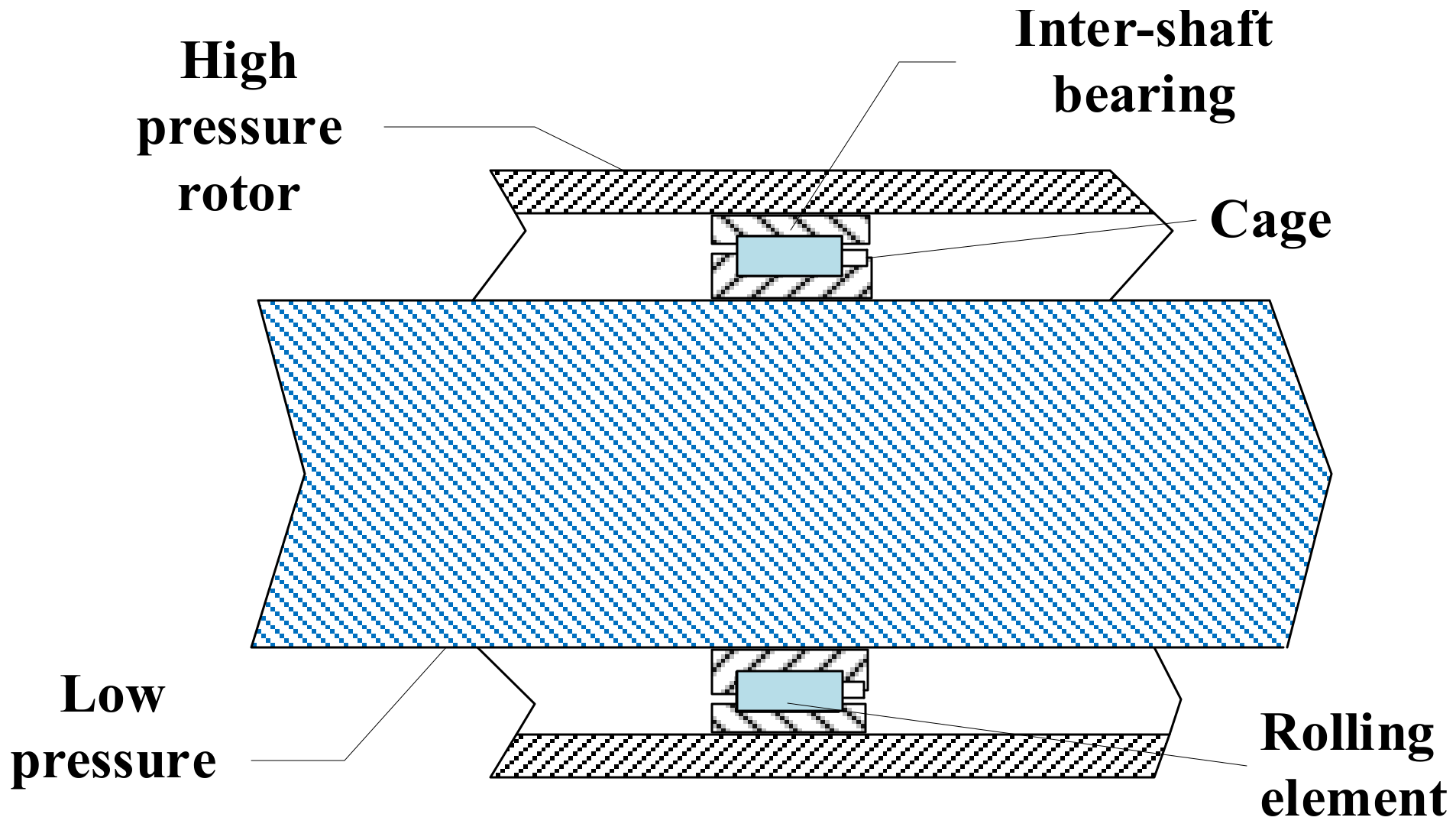
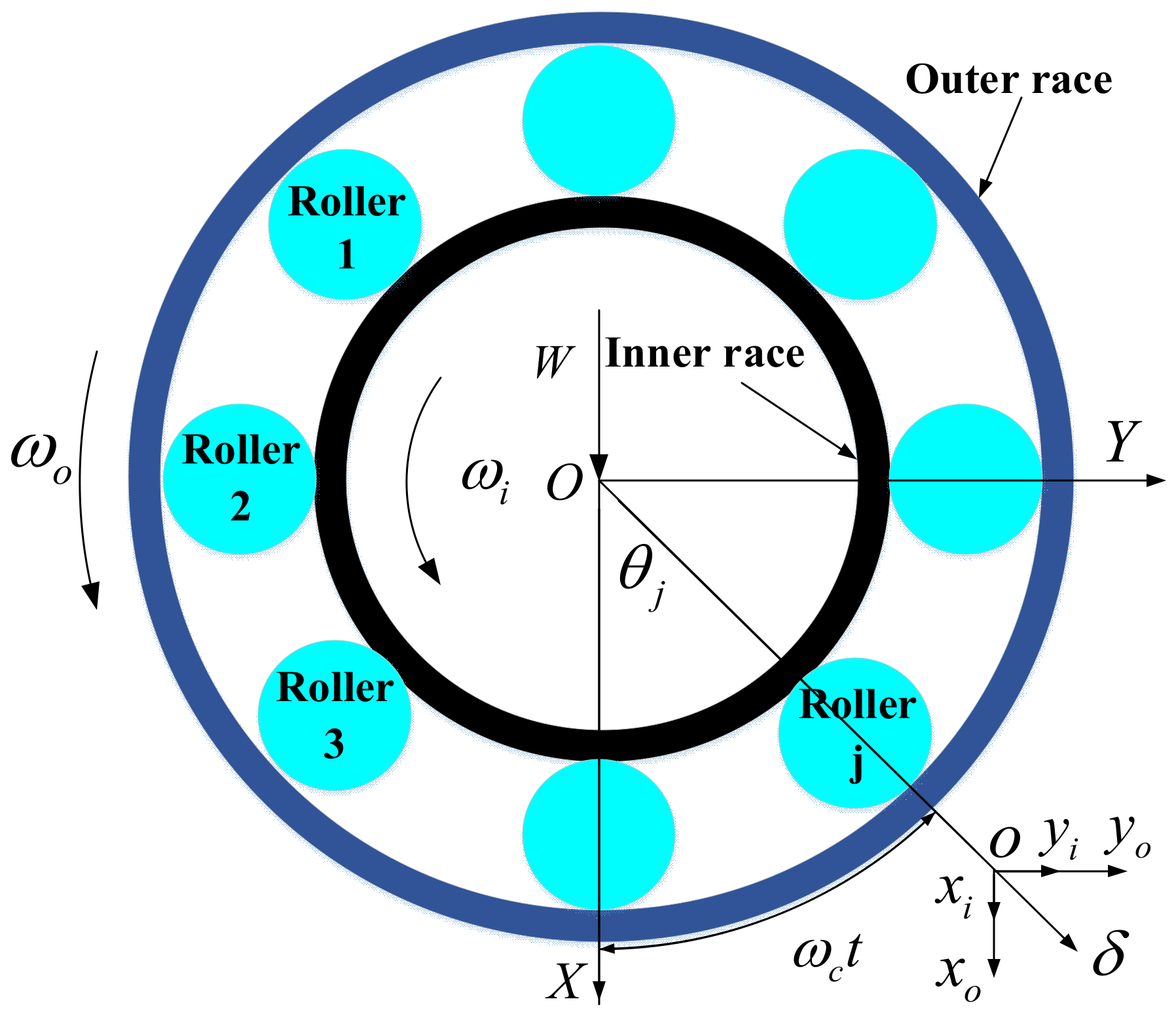

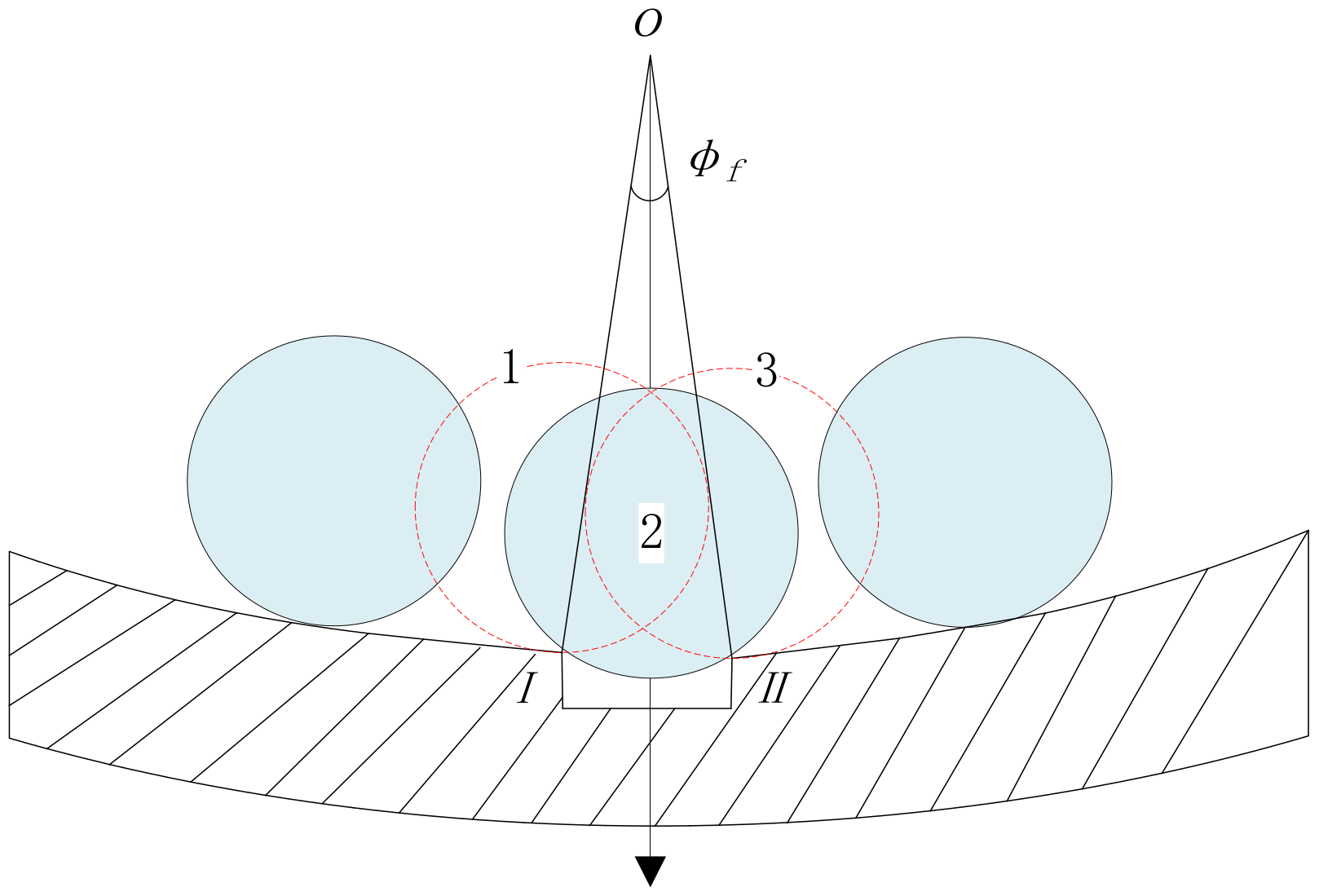

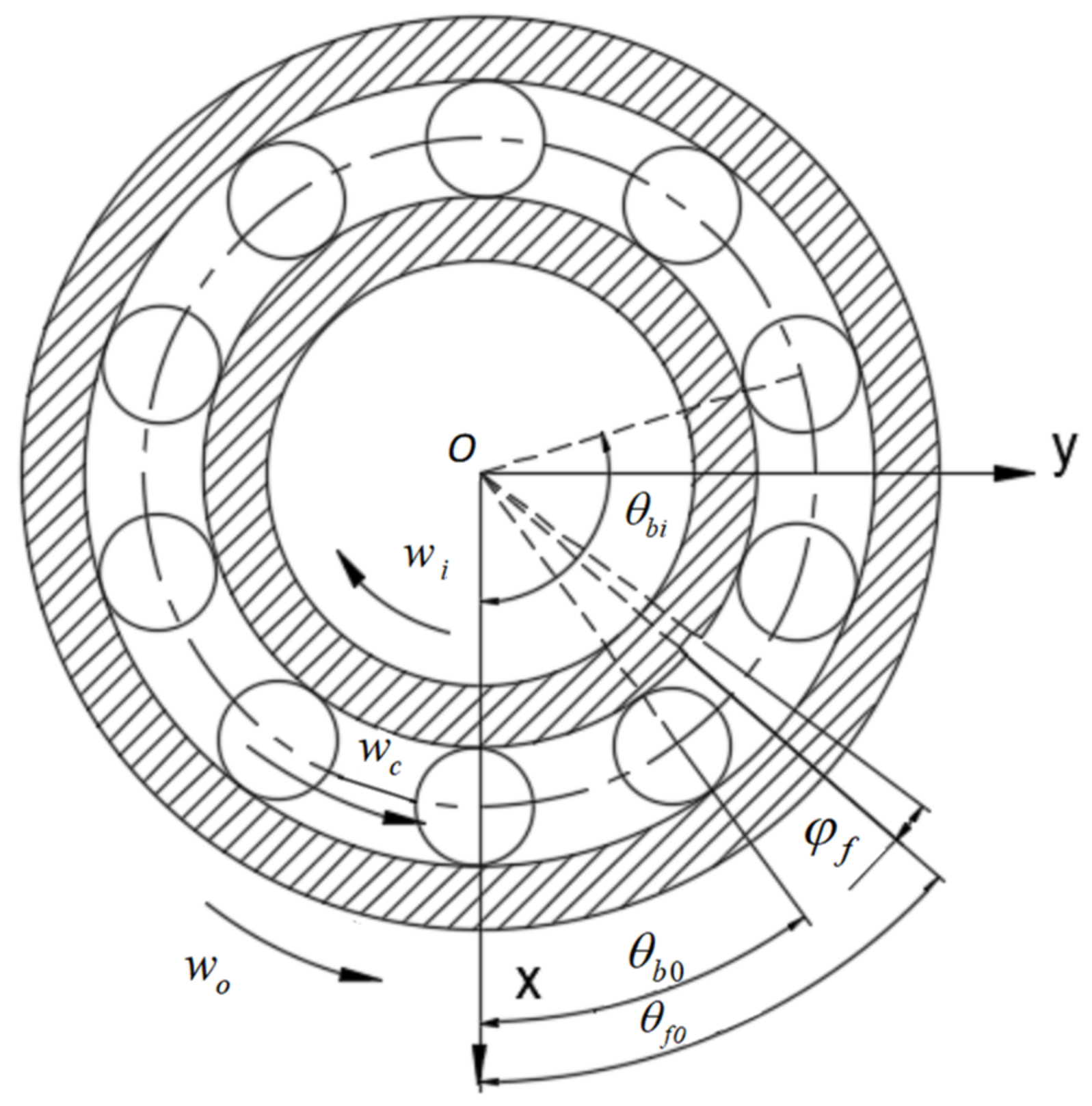

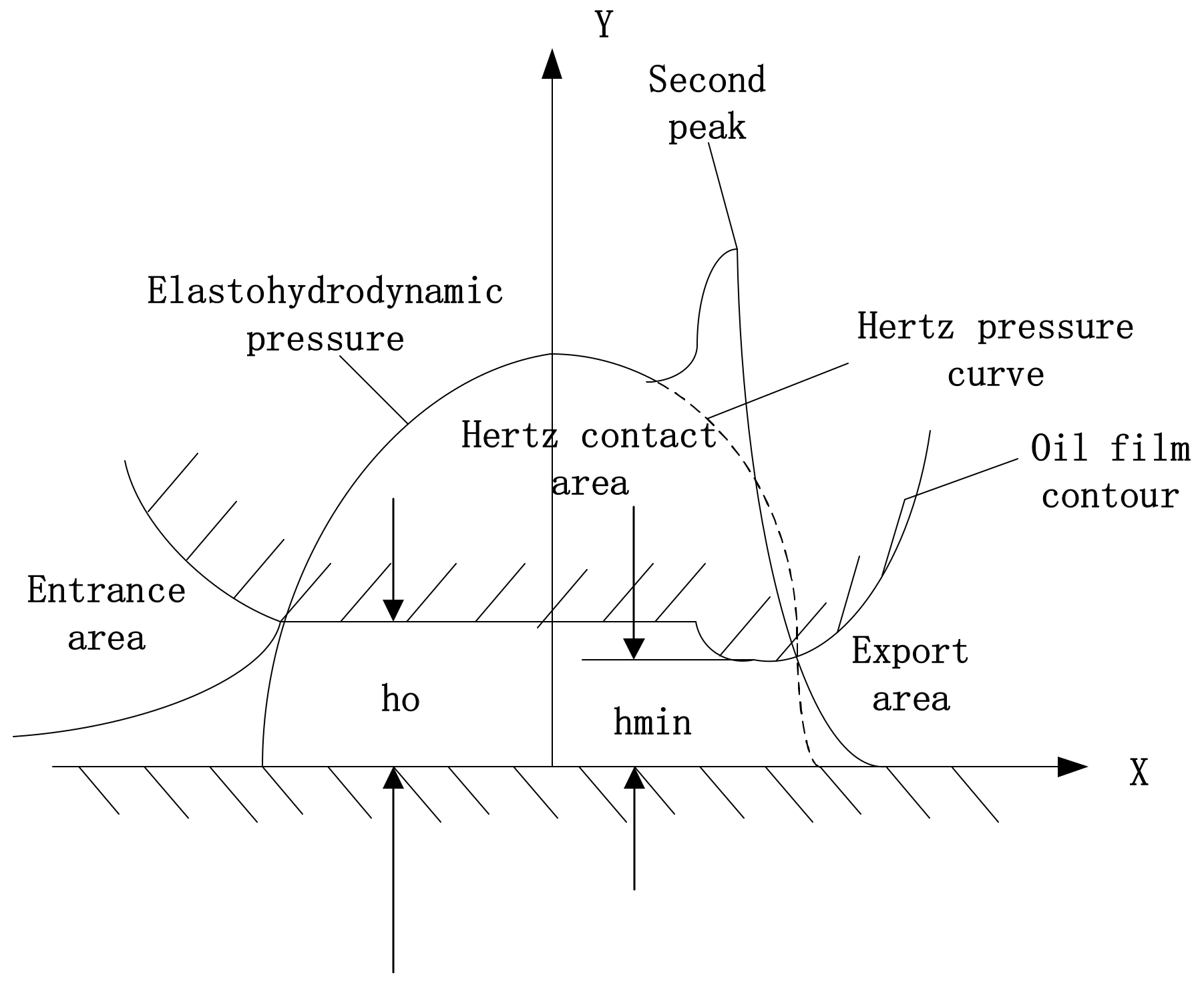

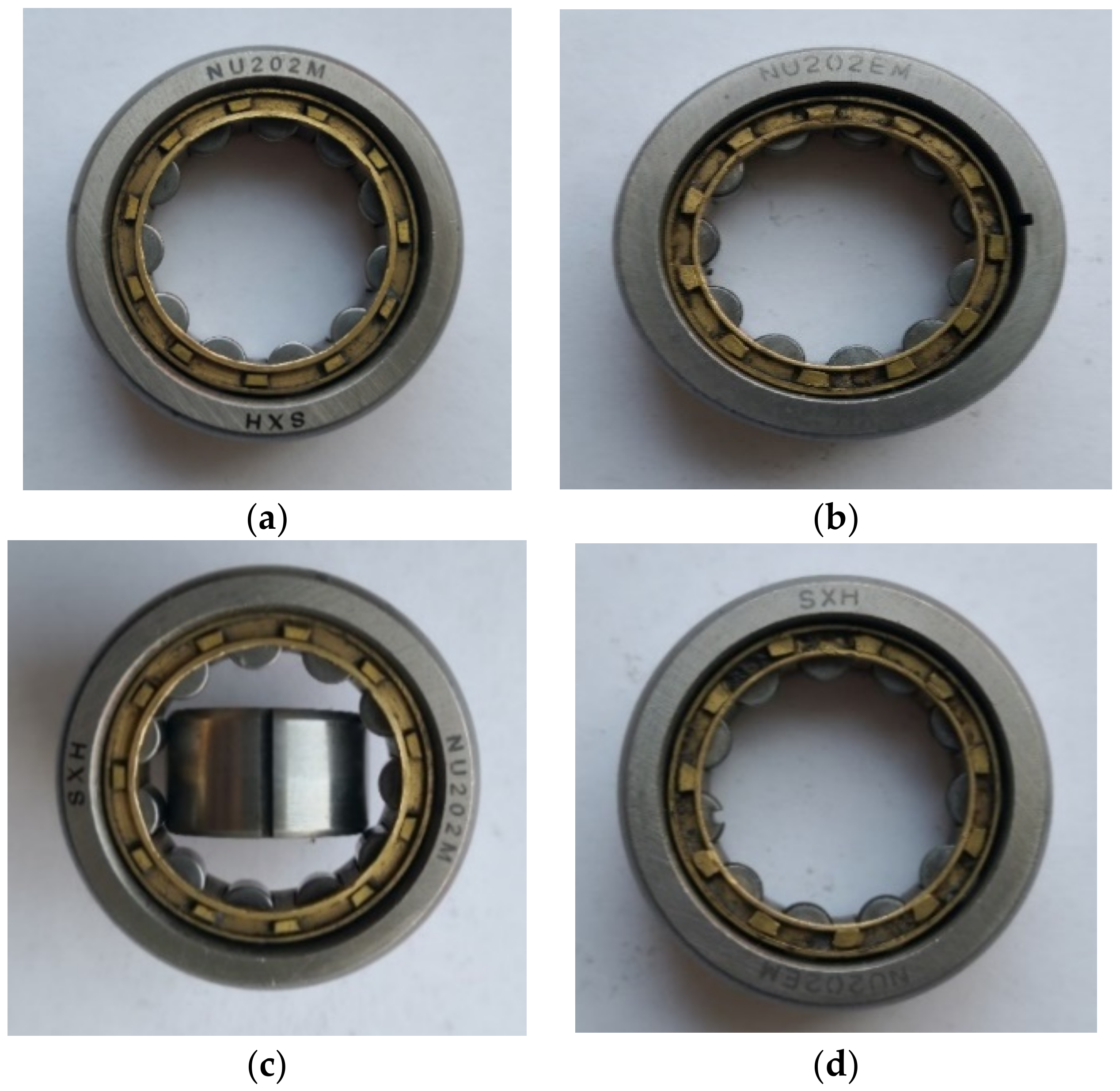
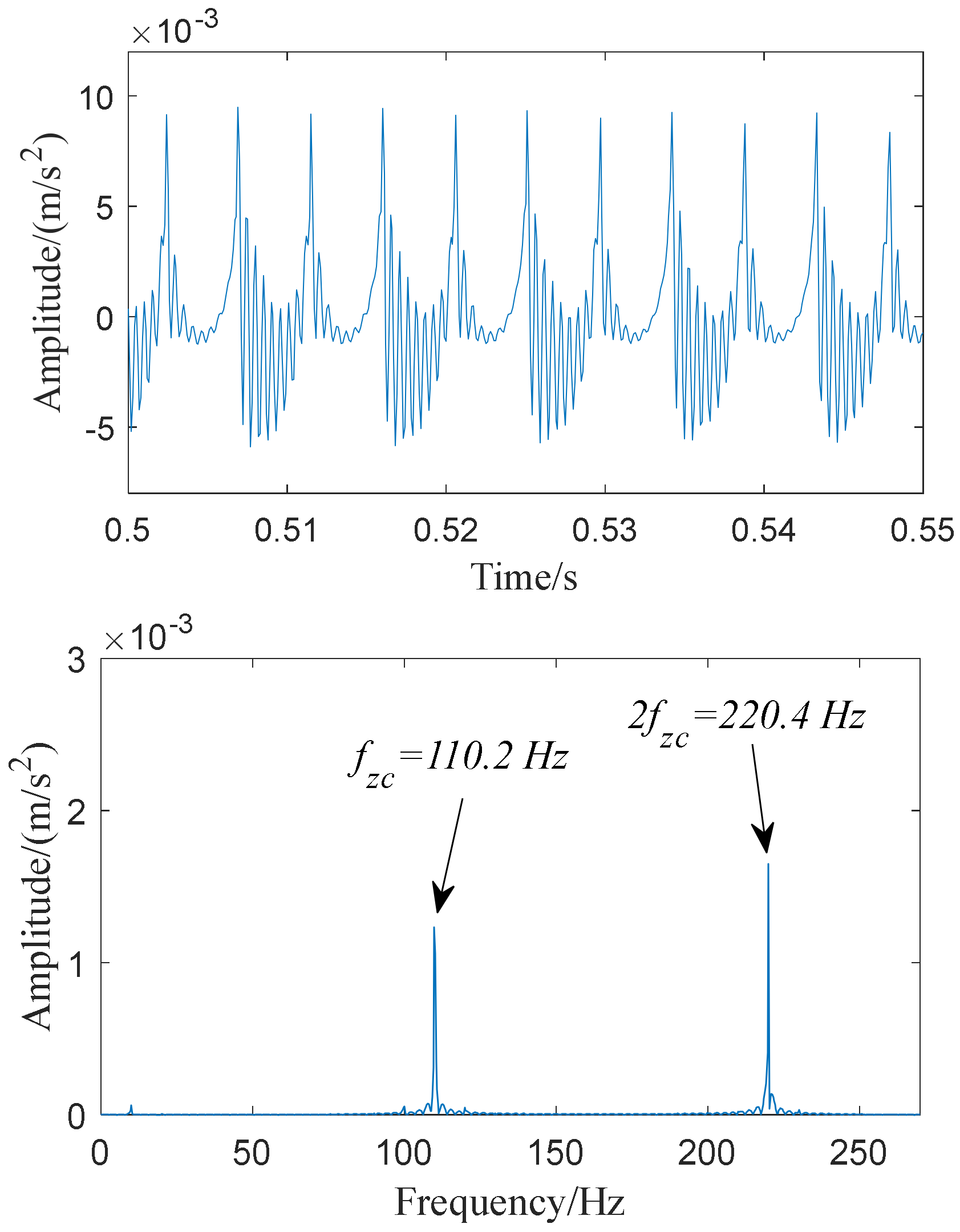
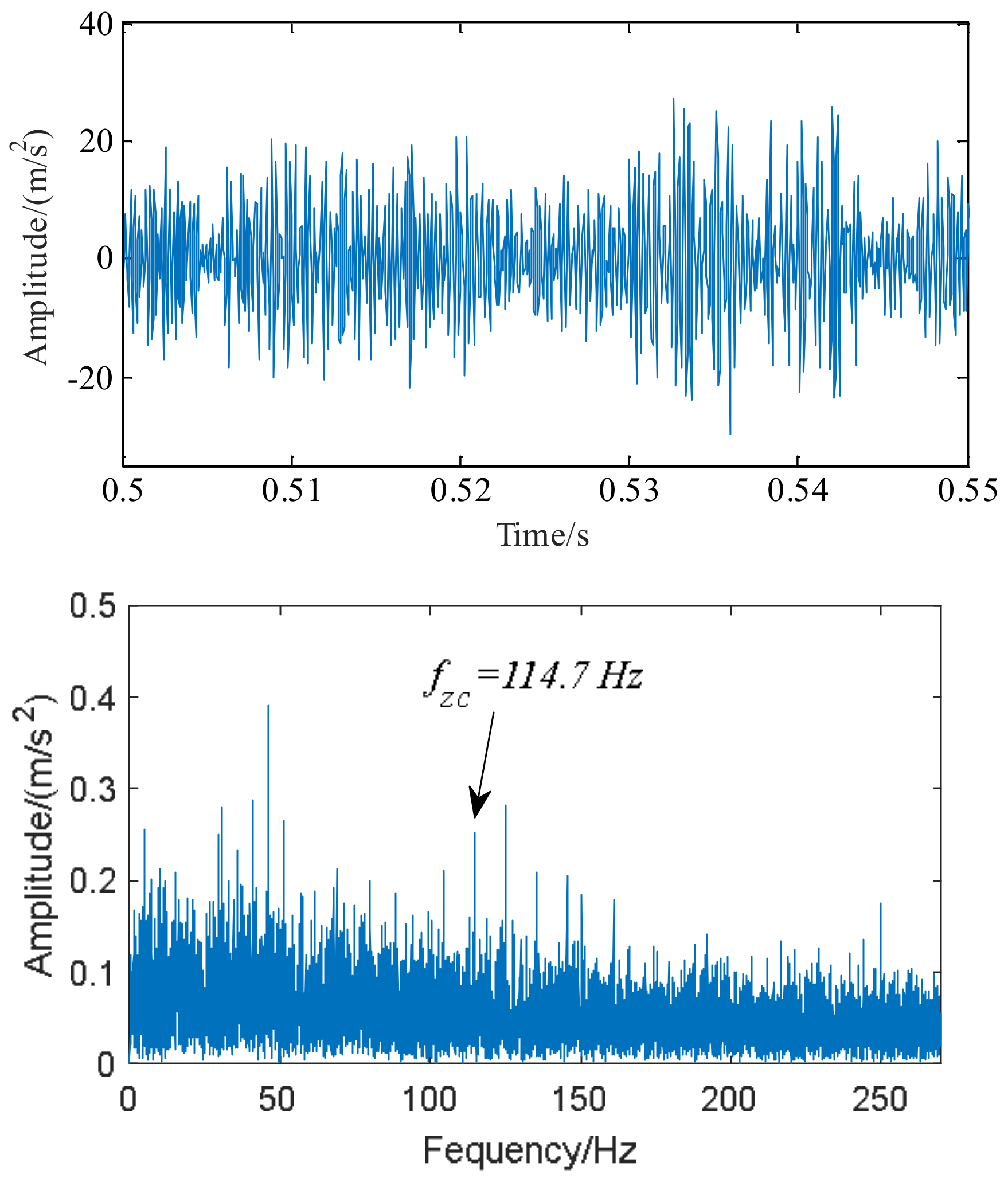


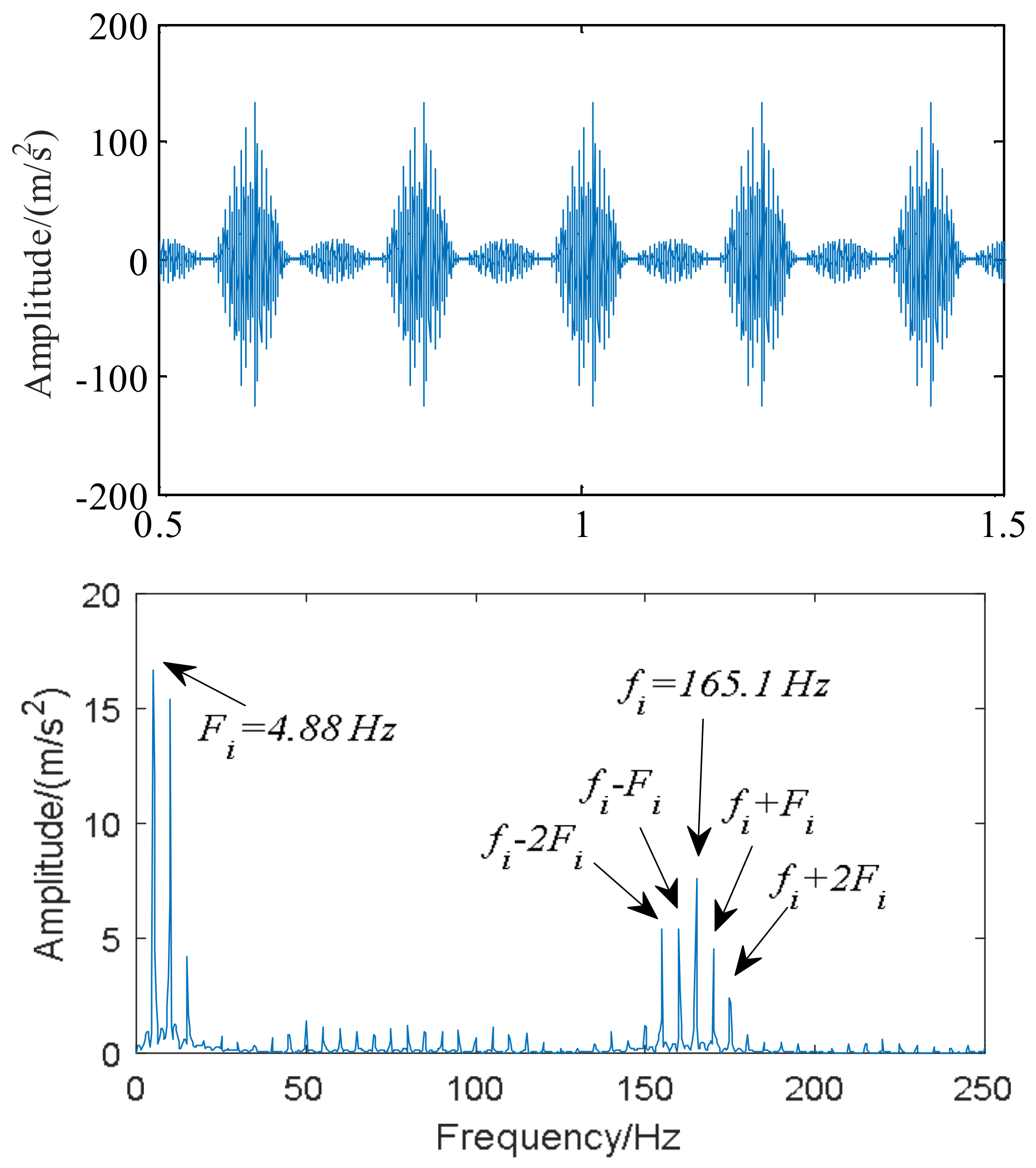
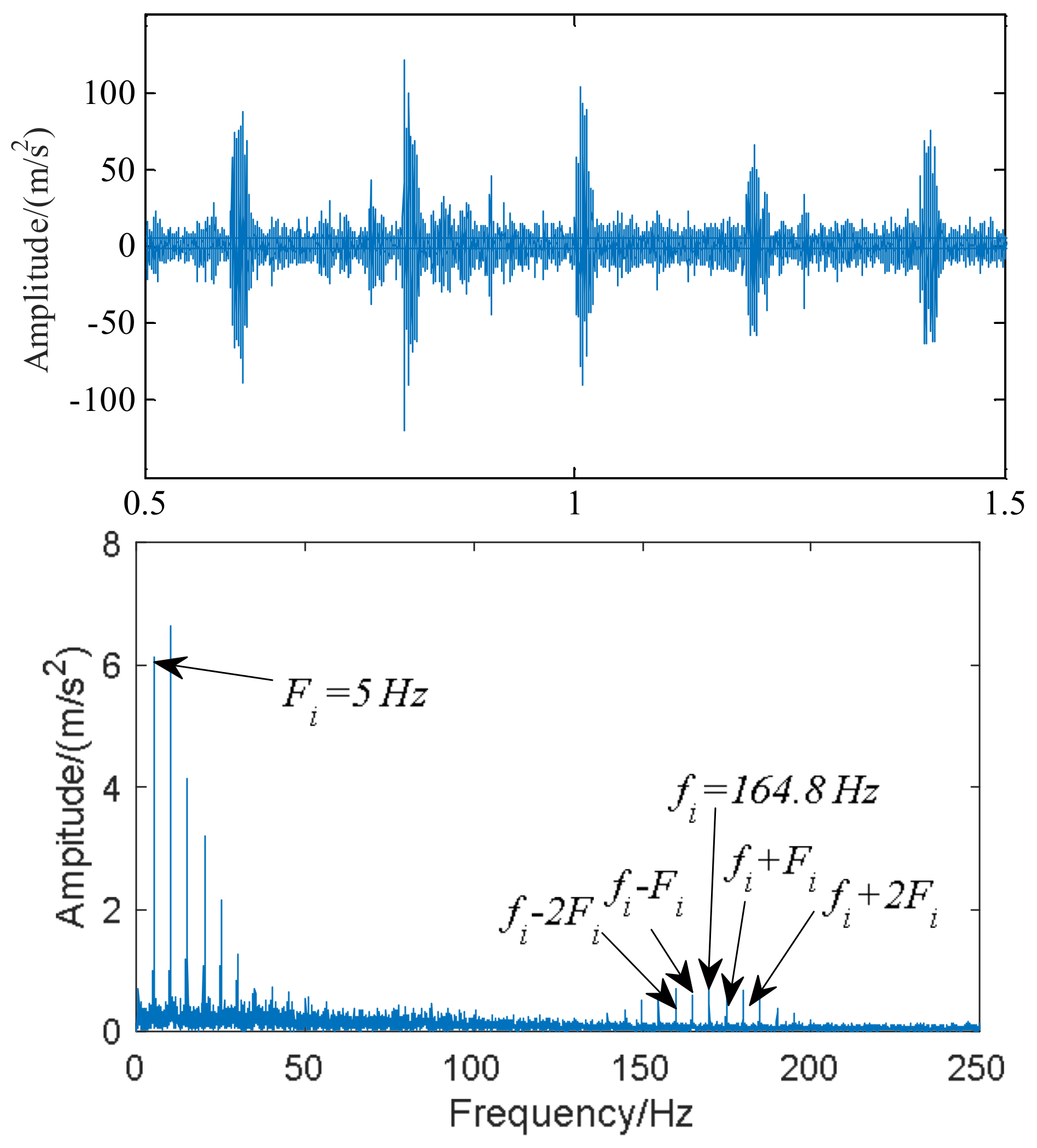

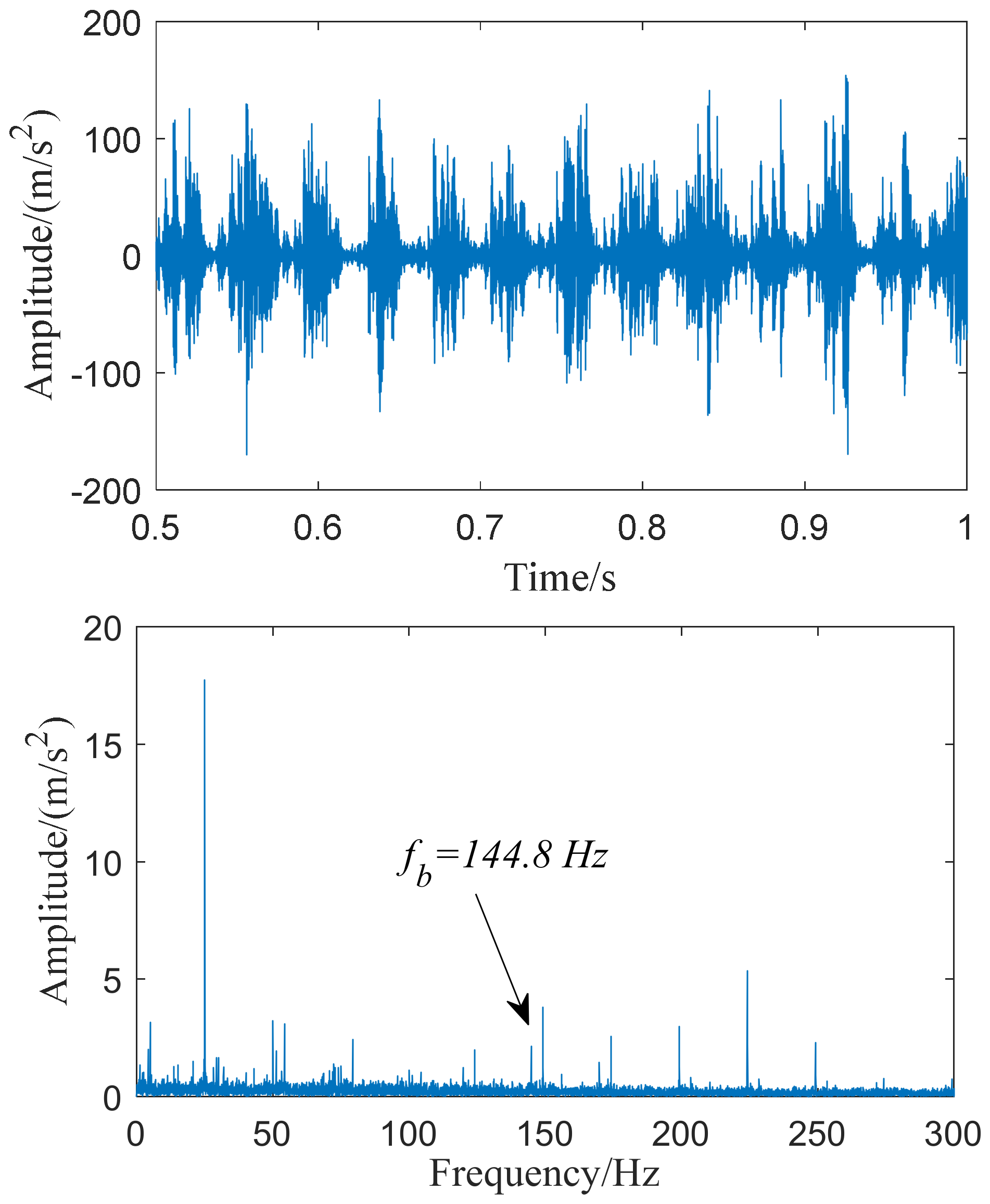

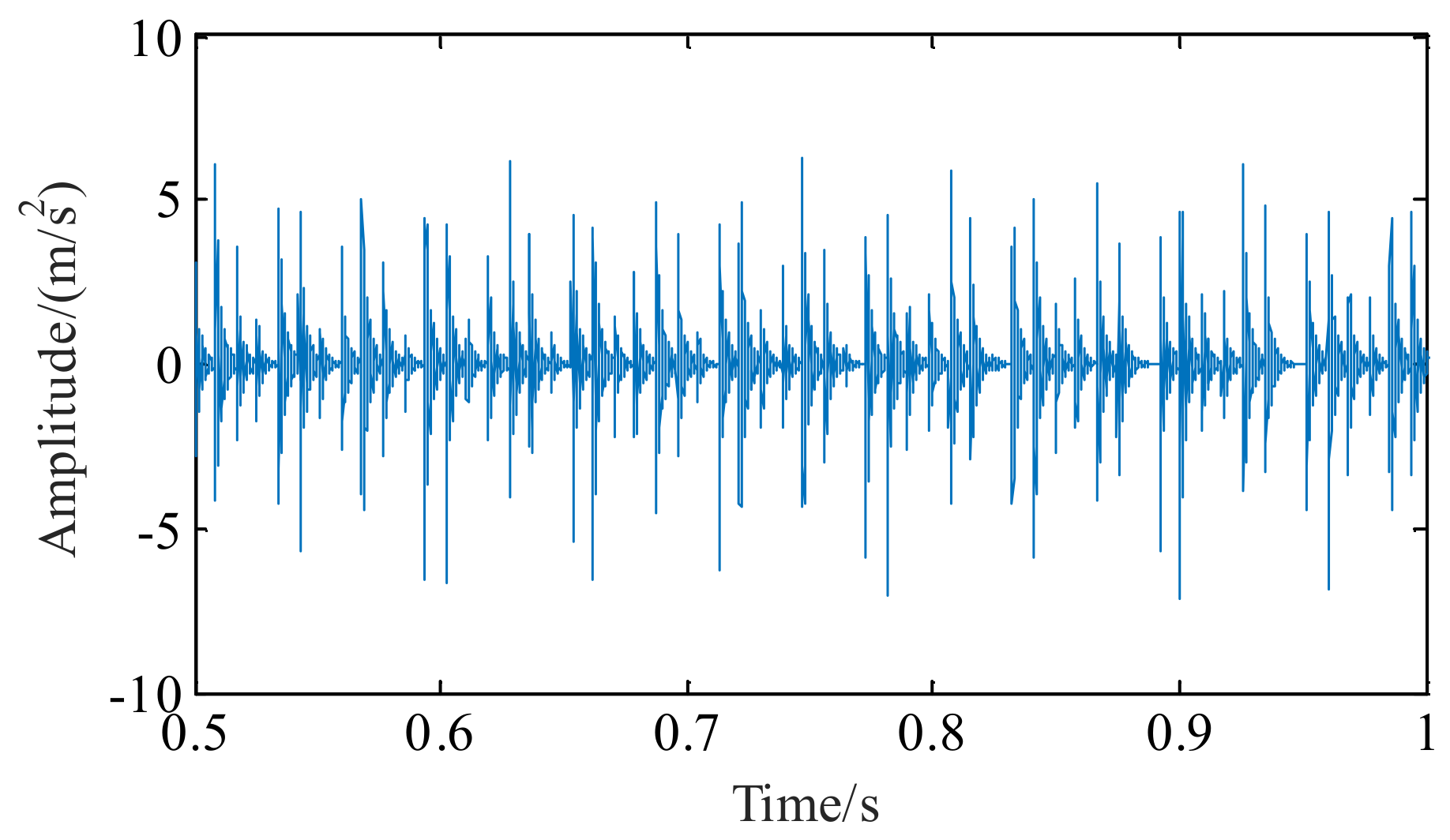

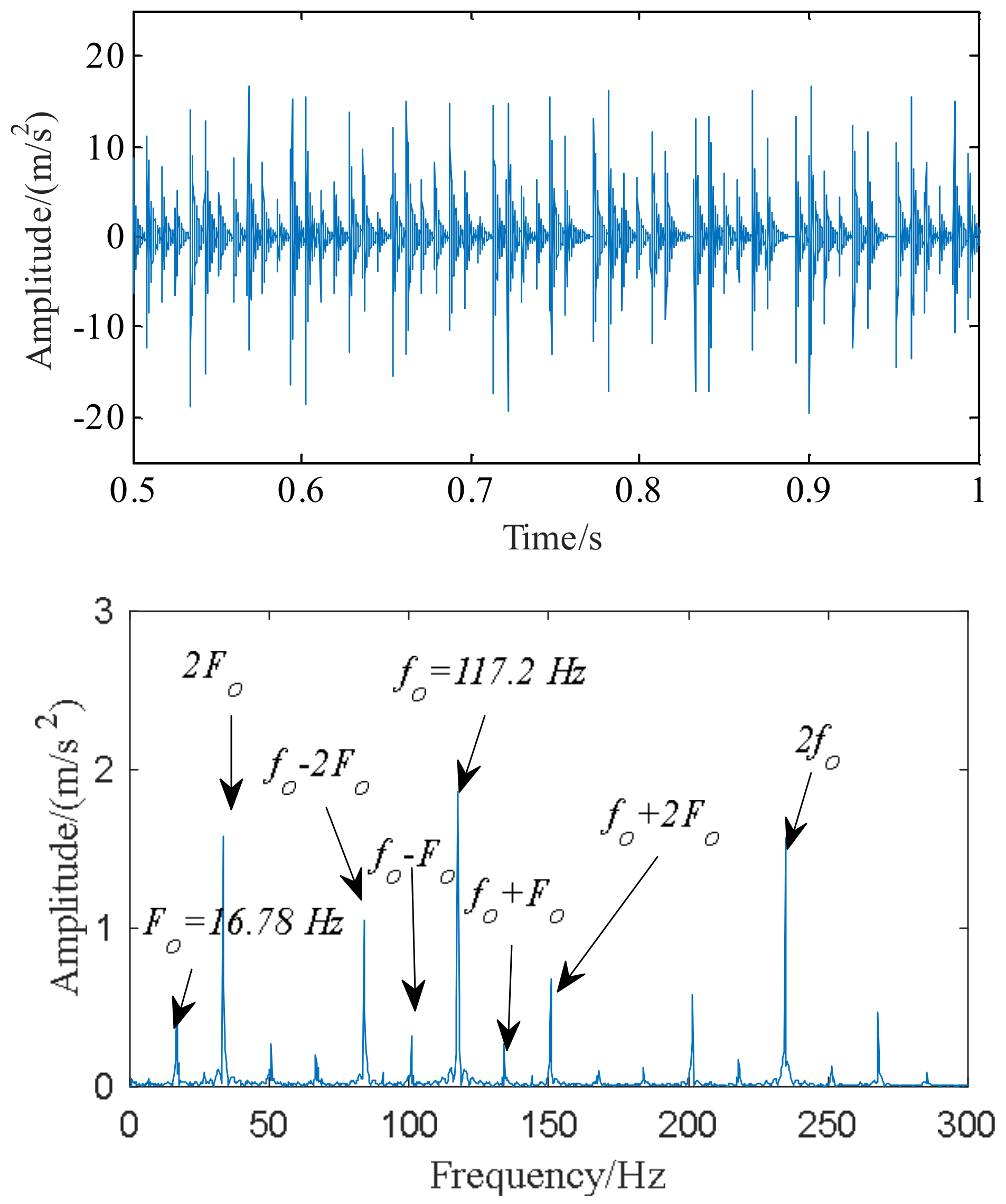
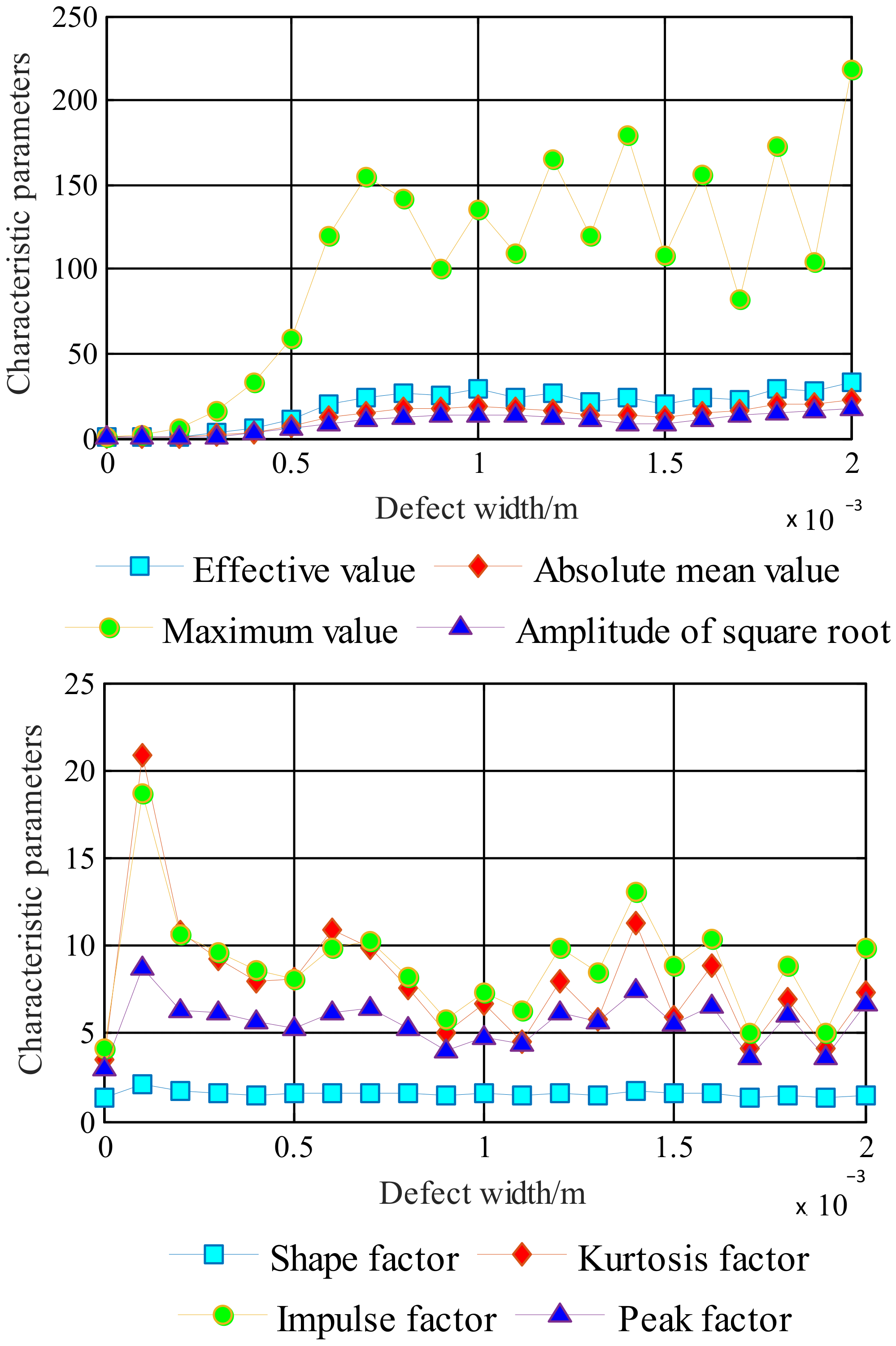


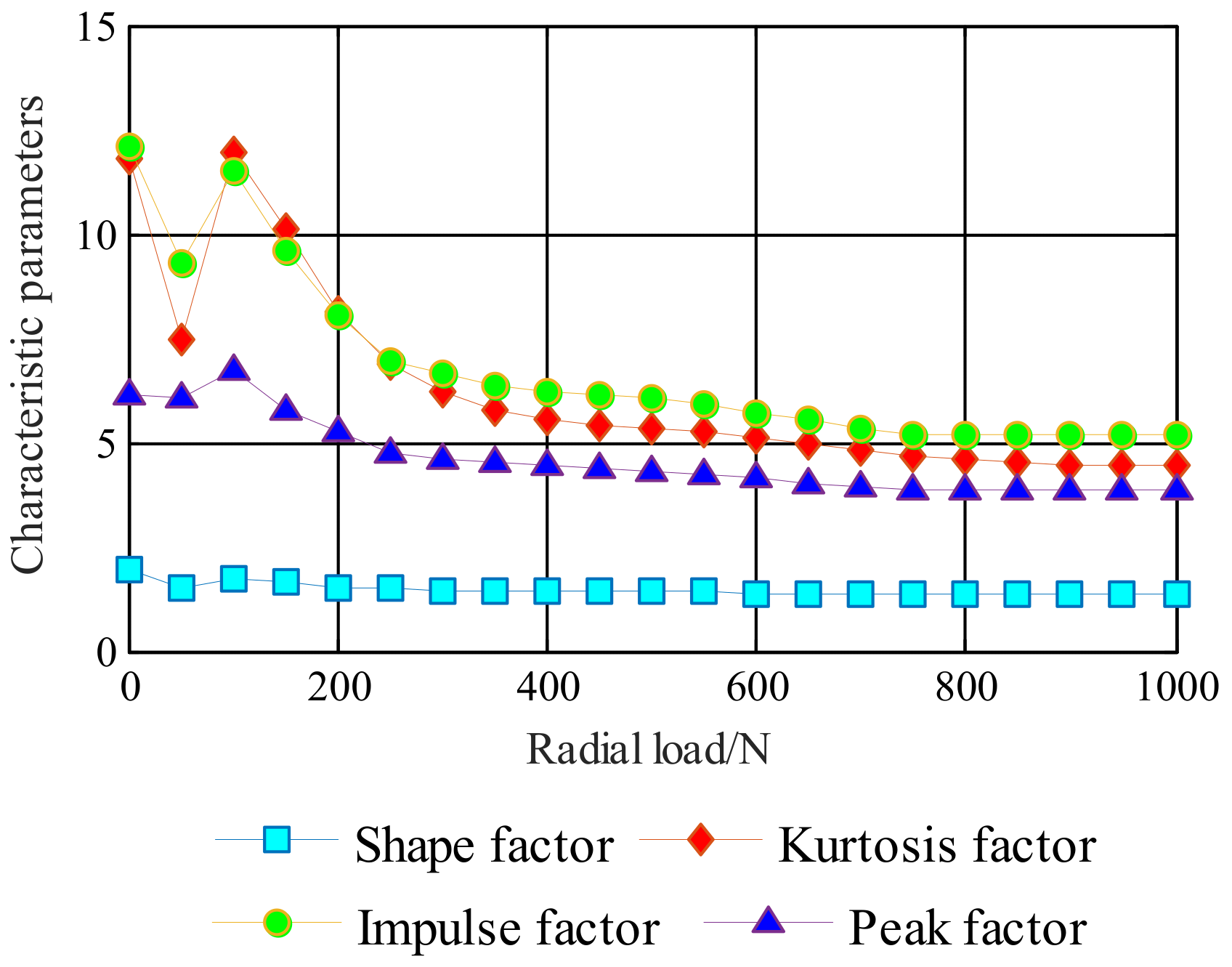
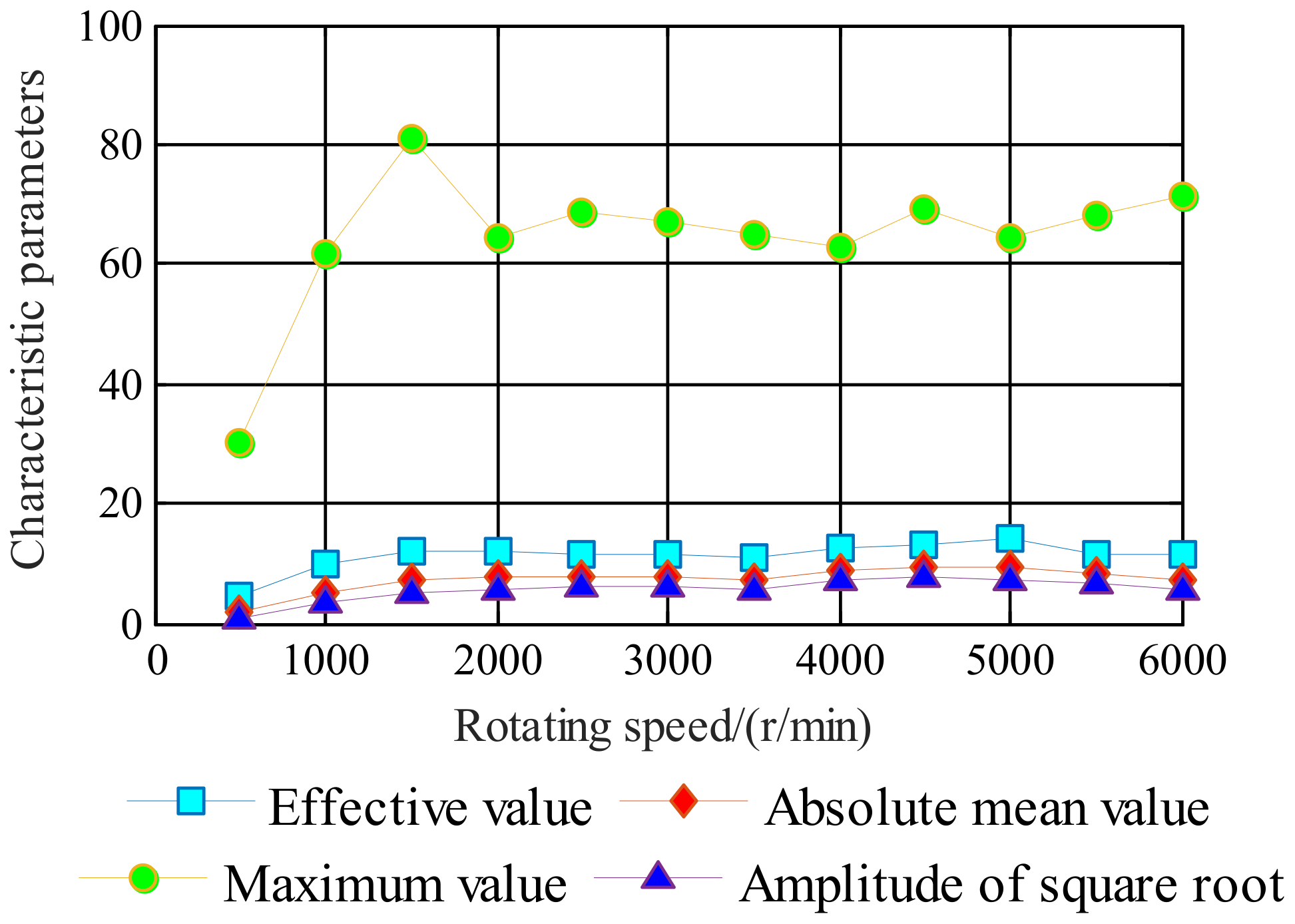

| Parameters | Value |
|---|---|
| Inner diameter (mm) | 15 |
| Outer diameter (mm) | 35 |
| Pitch diameter (mm) | 25 |
| Roller diameter (mm) | 5 |
| Number of rollers | 11 |
| Contact angle (°) | 0 |
| Radial clearance (μm) | 12 |
| Mass (kg) | 0.07 |
| Damping coefficient (Ns/m) | 300 |
| Bearing width (mm) | 11 |
| Fault Form | Working State | ||
|---|---|---|---|
| Normal state | Counter-rotation | 110 Hz | 220 Hz |
| Fault Form | Working State | ||
|---|---|---|---|
| Outer-ring fault | Counter-rotation | 132 Hz | 264 Hz |
| Fault Form | Working State | ||
|---|---|---|---|
| Inner-ring fault | Counter-rotation | 165 Hz | 330 Hz |
| Fault Form | Working State | Cage Frequency | ||
|---|---|---|---|---|
| Roller fault | Counter- rotation | 144 Hz | 288 Hz | 7 Hz |
Publisher’s Note: MDPI stays neutral with regard to jurisdictional claims in published maps and institutional affiliations. |
© 2022 by the authors. Licensee MDPI, Basel, Switzerland. This article is an open access article distributed under the terms and conditions of the Creative Commons Attribution (CC BY) license (https://creativecommons.org/licenses/by/4.0/).
Share and Cite
Tian, J.; Ai, X.; Zhang, F.; Wang, Z.; Wang, C.; Chen, Y. Dynamic Modeling and Simulation Analysis of Inter-Shaft Bearings with Local Defects Considering Elasto-Hydrodynamic Lubrication. Coatings 2022, 12, 1735. https://doi.org/10.3390/coatings12111735
Tian J, Ai X, Zhang F, Wang Z, Wang C, Chen Y. Dynamic Modeling and Simulation Analysis of Inter-Shaft Bearings with Local Defects Considering Elasto-Hydrodynamic Lubrication. Coatings. 2022; 12(11):1735. https://doi.org/10.3390/coatings12111735
Chicago/Turabian StyleTian, Jing, Xinping Ai, Fengling Zhang, Zhi Wang, Cai Wang, and Yingtao Chen. 2022. "Dynamic Modeling and Simulation Analysis of Inter-Shaft Bearings with Local Defects Considering Elasto-Hydrodynamic Lubrication" Coatings 12, no. 11: 1735. https://doi.org/10.3390/coatings12111735







